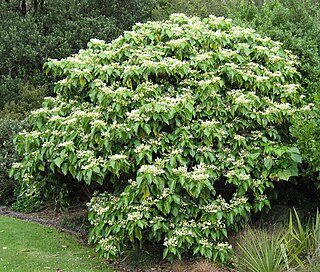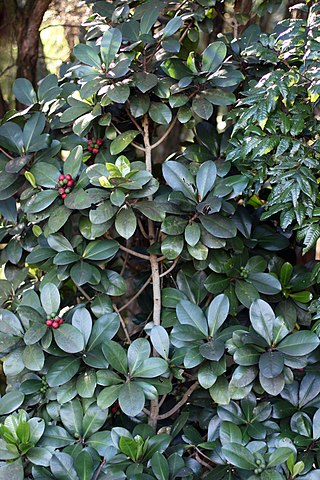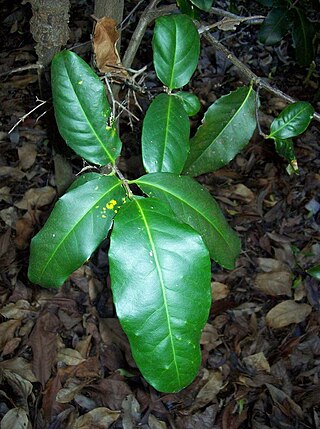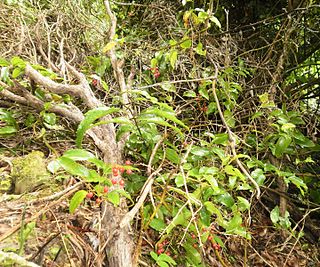
The Chatham Islands are an archipelago in the Pacific Ocean about 800 km (430 nmi) east of New Zealand's South Island, administered as part of New Zealand, and consisting of about 10 islands within an approximate 60 km (30 nmi) radius, the largest of which are Chatham Island and Pitt Island (Rangiauria). They include New Zealand's easternmost point, the Forty-Fours. Some of the islands, formerly cleared for farming, are now preserved as nature reserves to conserve some of the unique flora and fauna.

The Moriori are the first settlers of the Chatham Islands. Moriori are Polynesians who came from the New Zealand mainland around 1500 CE, which was close to the time of the shift from the archaic to the classic period of Polynesian Māori culture on the mainland. Oral tradition records migration to the Chathams in the 16th century. The settlers' culture diverged from mainland Māori, and they developed a distinct Moriori language, mythology, artistic expression and way of life. Currently there are around 700 people who identify as Moriori, most of whom no longer live on the Chatham Islands. During the late 19th century some prominent anthropologists proposed that Moriori were pre-Māori settlers of mainland New Zealand, and possibly Melanesian in origin; this hypothesis has been discredited by archaeologists since the early 20th century, but continued to be referred to by critics of the Treaty of Waitangi settlement process into the 21st.

Alectryon excelsus, commonly known as tītoki, or sometimes New Zealand oak, is a shiny-leaved tree native to New Zealand. It is in the family Sapindaceae. It lives in coastal and lowland forests throughout most of the North Island and from Banks Peninsula to central Westland in the South Island.

The kererū, also known as kūkupa, New Zealand pigeon or wood pigeon is a species of pigeon native to New Zealand. Johann Friedrich Gmelin described the bird in 1789 as a large, conspicuous pigeon up to 50 cm (20 in) in length and 550–850 g (19–30 oz) in weight, with a white breast and iridescent green–blue plumage. Two subspecies have been recognised; the second—the Norfolk pigeon of Norfolk Island—became extinct in the early 20th century. Kererū pairs are monogamous, breeding over successive seasons and remaining together when not breeding. They construct nests with twigs in trees, with a single egg clutch.

Beilschmiedia tawa, commonly known as the tawa, is a New Zealand broadleaf tree common in the central parts of the country. Tawa is often the dominant canopy tree species in lowland forests in the North Island and the north east of the South Island, but will also often form the subcanopy in primary forests throughout the country in these areas, beneath podocarps such as kahikatea, matai, miro and rimu. Individual specimens may grow up to 30 metres or more in height with trunks up to 1.2 metres in diameter, and they have smooth dark bark. The Māori word "tawa" is the name for the tree.

Aristotelia serrata, commonly known as wineberry or in the Māori language makomako or just mako, is a small tree in the family Elaeocarpaceae, in the genus Aristotelia, found in the North Island, South Island and Stewart Island of New Zealand. It is a small deciduous fast-growing tree or shrub. The tree can reach up to 10m tall, with a trunk diameter up to 30 cm. The bark is pale brown, smooth and patterned with flat lenticels. Branches are long, slender and spreading, branchlets have a reddish-brown colour when pubescent.
Moriori, or ta rē Moriori, is a Polynesian language most closely related to New Zealand Māori. It is spoken by the Moriori, the indigenous people of New Zealand's Chatham Islands, an archipelago located east of the South Island. Moriori went extinct as a first language at the turn of the 20th century, but revitalisation attempts are ongoing.

Edward Robert Tregear, Ordre des Palmes académiques was a New Zealand public servant and scholar. He was an architect of New Zealand's advanced social reforms and progressive labour legislation during the 1890s.

Hāpūpū / J M Barker Historic Reserve is one of three national historic reserves in New Zealand. It is located close to Hanson Bay at the north-eastern end of Chatham Island, the main island of the Chatham Islands. It was created in 1979 following a gift of land from a local business. This was done to protect 33 hectares of kōpi forest containing Moriori tree carvings called momori-rakau. In 1996, the reserve was officially designated as a national historic reserve, owing to the site's significance as a representation of Moriori traditions.

Entelea arborescens or whau is a species of malvaceous tree endemic to New Zealand. E. arborescens is the only species in the genus Entelea. A shrub or small tree to 6 m with large lime-like leaves giving a tropical appearance, whau grows in low forest along the coast of the North Island and the northern tip of the South Island. The dry fruit capsules are very distinctly brown and covered with spines. The common name whau is a Māori word that appears to derive from the common Polynesian word for hibiscus, particularly Hibiscus tiliaceus, which it superficially resembles. Alternate names include 'New Zealand mulberry', 'corkwood' and 'evergreen lime'.

Elingamita is a genus in the plant family Primulaceae. It consists of a single species, Elingamita johnsonii, a tree or shrub endemic to the Three Kings Islands approximately 55 km north of the North Island of New Zealand. The entire world natural population of the tree is confined to a small rocky island and two nearby islets, and thus is vulnerable to destruction by fire or other unforeseen events. Elingamita johnsonii grows as a shrub or small tree in pōhutukawa forest and coastal scrub on West island. It also occurs on two rocky islets of the Princes Group; on one of these islets, Hinemoa Rock, it grows as an emergent canopy tree in exposed places. The relationship of Elingamita to other genera of the Primulaceae remains to be properly established. Discovered in 1950, Elingamita johnsonii takes its name from the steamer Elingamite, which was wrecked on West Island in 1902. The natural range is currently free of rodents, but the fruit is known to be very palatable to rats.

Planchonella costata is a small coastal tree native to the northern North Island and to Norfolk Island (Australia). In New Zealand, its common name is tawapou ; on Norfolk Island it is called bastard ironwood. The name costata is from the Latin costatus (ribbed), a reference to the prominently raised primary nerves of the leaves.

Pennantia baylisiana, commonly known as Three Kings kaikōmako or kaikōmako manawatāwhi (Māori), is a species of plant in the family Pennantiaceae. It is endemic to Manawatāwhi / Three Kings Islands, around 55 kilometres (34 mi) northwest of Cape Reinga, New Zealand. At the time of its discovery just one plant remained. This single tree grows on a scree slope inaccessible to browsing goats, and has been called "the world's loneliest tree". The species was discovered in 1945 by botanist Geoff Baylis and described in 1948, although it took decades before it was it was fully accepted as a distinct species of Pennantia. Although the only wild tree is female, it was successfully propagated from cuttings in the 1950s, one of which was induced to self-pollinate in 1985. Subsequent seed-grown plants have themselves set seeds, and the species has been replanted on the island, the adjoining mainland, and in public and private gardens around New Zealand.

Corynocarpus is the only genus of plants in the family Corynocarpaceae and includes five species. It is native to New Guinea, Australia, New Zealand, New Caledonia, and Vanuatu.

The Nelson Coast temperate forests is an ecoregion in New Zealand.

Corynocarpus rupestris, commonly known as the Glenugie karaka, is a rainforest tree found in eastern Australia. It is a rare plant with a ROTAP rating of 2VC-t. There are two sub-species; arborescens is a small hairless shrub or tree up to 13 metres tall with a stem diameter up to 40 cm (16 in), and sub-species rupestris grows only to 6 metres, with a stem diameter up to 17 cm (6.7 in).
Kiti Karaka Rīwai was a New Zealand tribal leader. She was born in Ruapuke Island, Southland, New Zealand in 1870, to parents Arapetere Karaka and Mary.

Ripogonum scandens is a common rainforest vine endemic to New Zealand. The species was described by Johann Reinhold Forster, and Georg Forster in 1776. It has a conservation status of Not Threatened.

The Moriori genocide was the mass murder, enslavement, and cannibalism of the Moriori people, the indigenous ethnic group of the Chatham Islands, by members of the mainland Māori New Zealand iwi Ngāti Mutunga and Ngāti Tama from 1835 to 1863. The invaders murdered around 300 Moriori and enslaved the remaining population. This, together with introduced Western diseases, caused the population to drop from 1,700 in 1835 to 100 in 1870. The last full-blood Moriori, Tommy Solomon, died in 1933. There remain just under a thousand people of mixed descent who identify as Moriori.

























